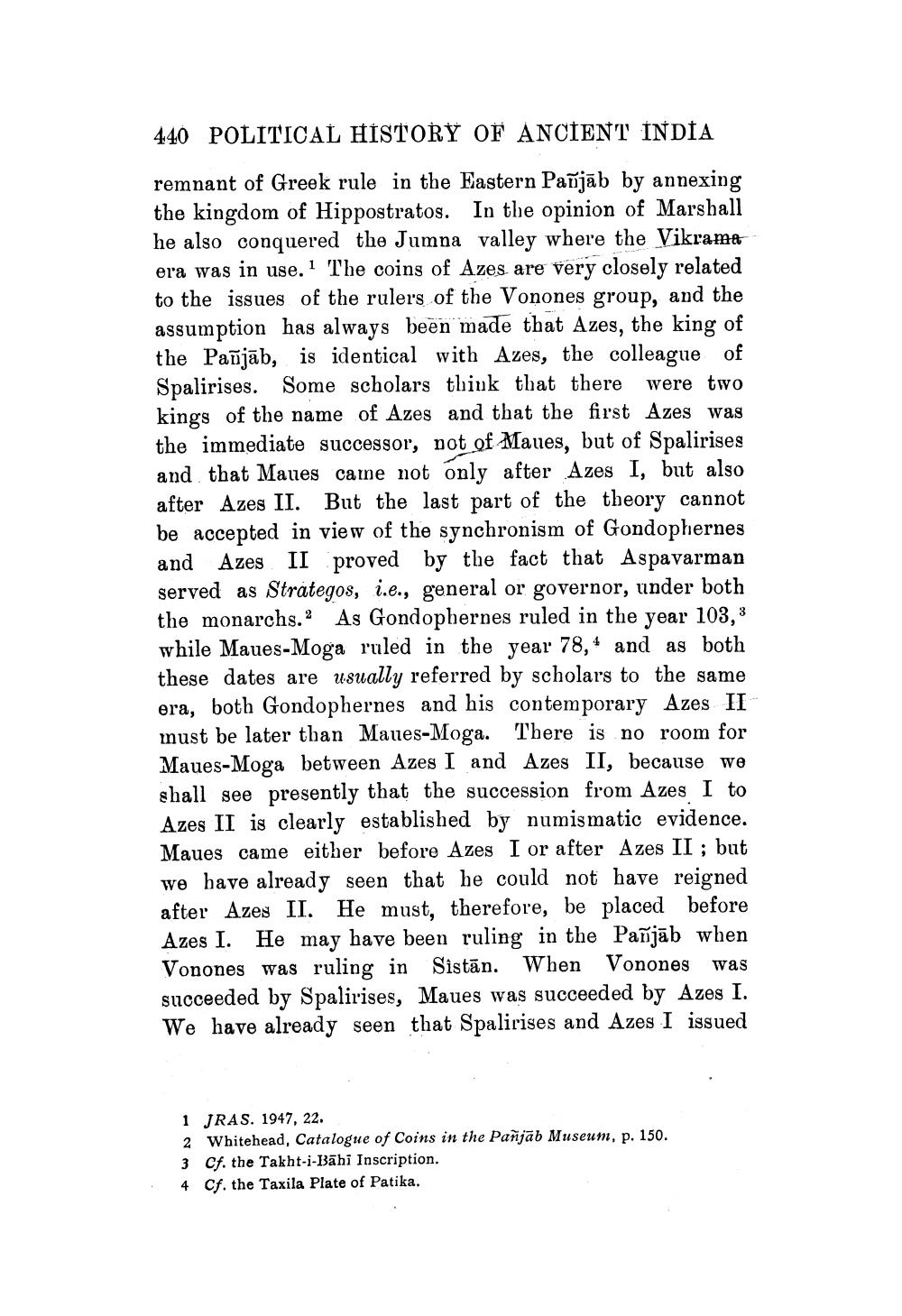________________
440 POLITICAL HISTORY OF ANCIENT ÍNDIA
remnant of Greek rule in the Eastern Pañjāb by annexing the kingdom of Hippostratos. In the opinion of Marshall he also conquered the Jumna valley where the Vikrama era was in use. The coins of Azes are very closely related to the issues of the rulers of the Vonones group, and the assumption has always been made that Azes, the king of the Pañjāb, is identical with Azes, the colleague of Spalirises. Some scholars think that there were two kings of the name of Azes and that the first Azes was the immediate successor, pot of Maues, but of Spalirises and that Maues came not only after Azes I, but also after Azes II. But the last part of the theory cannot be accepted in view of the synchronism of Gondophernes and Azes II proved by the fact that Aspavarman served as Strategos, i.e., general or governor, under both the monarchs. As Gondophernes ruled in the year 103,3 while Maues-Moga ruled in the year 78,* and as both these dates are usually referred by scholars to the same era, both Gondophernes and his contemporary Azes II must be later than Maues-Moga. There is no room for Maues-Moga between Azes I and Azes II, because we shall see presently that the succession from Azes I to Azes II is clearly established by numismatic evidence. Maues came either before Azes I or after Azes II ; but we have already seen that he could not have reigned after Azes II. He must, therefore, be placed before Azes I. He may have been ruling in the Pañjāb when Vonones was ruling in Sistān. When Vonones was succeeded by Spalirises, Maues was succeeded by Azes I. We have already seen that Spalirises and Azes I issued
1 JRAS. 1947, 22. 2 Whitehead, Catalogue of Coins in the Pañjāb Museum, p. 150. 3 Cf. the Takht-i-Bāhi Inscription. 4 Cf. the Taxila Plate of Patika.




